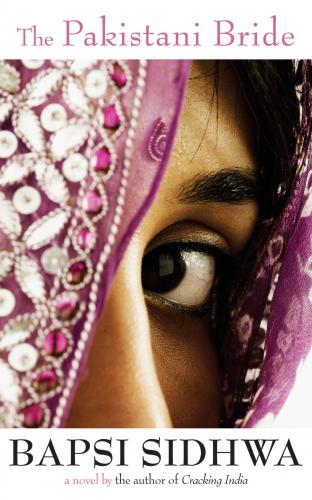Table of Contents
More Fiction from Milkweed Editions
Also by Bapsi Sidhwa
The Crow Eaters An American Brat Cracking India Water
For my children, Mohur, Koko, Parizad
Introduction
The Pakistani Bride has had an interesting publishing history. Although Bapsi Sidhwa wrote this novel first, it was not published until 1983, a year after The Crow Eaters appeared—the book that displayed the comic and satirical gifts for which she has since become known. Then in 1988 came Cracking India, which won critical success for combining comedy with historical drama.
Drama is what impels The Pakistani Bride and it strikes one, now that the book is being reissued, as an astonishingly accomplished first novel to be written by a woman who lived, as Sidhwa has described, the conventional life of a businessman’s wife and mother of three children, and who had written nothing previously except for a few articles. She has said it is based on a real event she heard of on a visit with her husband to the Karakoram Mountains in the northwest of Pakistan on its border with Afghanistan—a remote, almost unexplored region now known the world over as the hideout of the Taliban and the men inspired by Osama bin Laden. A tribal man had brought his young daughter up from the plains of Punjab and given her in marriage, according to tradition, to a young man of his family. In the wild tribal hinterland the girl had been subjected to such brutality and unremitting hardship that she had run away into the trackless mountains through which the Indus River runs in unfettered majesty. According to the strict code of honour by which her husband and his people lived in the absence of any other law, this act could not be forgiven; she was hunted down like an animal and her headless body had been found floating in the shallows of the river.
Bapsi Sidhwa is a woman of strong feminist convictions and the story haunted her so that, on her return home, she began to write it down. With pain and outrage as its impulse, the novel could have turned into a didactic tract exposing the cruelty of a patriarchal and brutalized society out of touch with a world in which a woman could hold a respected status. Instead, the story that took Sidhwa four years to write grew increasingly complex and layered, incorporating many subsidiary characters and contrasting social worlds. The resulting novel delineates with sharp observation and insight a spartan and remote people who live by their own inflexible rules as well as the comfort and pleasure-loving people of the fertile Punjab plains to the south.
This story’s complex subject matter required a strong narrative thrust and the adroit combination of separate elements into a clear, sharply etched pattern. There are no loose ends or slow moments or wrong turns; the story has a momentum that steadily increases in tension until it reaches its highly cinematic climax—then breaks off to let the reader contemplate the worlds from which it emerged.
Three worlds come together to form the basic story. The first section contains a largely sympathetic portrait of the tribal society of Kohistan. We meet the central character, Qasim, as a ten-year-old boy being handed a gun by his father and being told he is to be married; a fellow tribal who has failed to repay a debt has promised him his daughter instead. The boy does not comprehend
